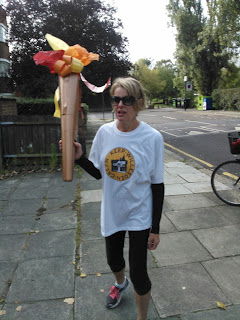Happy Holidays everybody!
Although I won’t be trick or treating I appreciate that for most, it’s a harmless holiday so I hope all goes well for you.
I hope this story goes well to help you enjoy this special day...
Being a fan of unsolved mysteries, I have encountered two cases that defy logic. One is Amityville, the house on the hill, in North America.
The other is the mystery of the Barbados Vault.
Known humorously as Rhinna-land, other notable figures who can trace their ancestry to this island include the US Attorney General Eric Holder, retired boxer Muhammad Ali (Clay) and rapper LL Cool J.
Other US noticables include the Dash family and deceased boxer Joe Louis, who can also trace their ancestry to people from this island in the sun as many have the same family name.
Then you've got the Rock family - U.S funnyman Chris Rock take note.
The same goes for the West surname. KanYe may take an interest.
The retired Brazil footballer Pele can also trace his ancestory to this country.
The same can probably be said of the Republican former secretary of State Condoleezza Rice
Barbados is a small island. It’s a well known fact that if you have the same surname, then you’re related to that person, whether you’ve met - or like - them or not. Nevertheless, back to the issue in mind.
There was a burial vault belonging to the Chase family, who were slave owners on this island. In the early nineteenth century, the head of the family was a harsh and ruthless man called, wait for it, The Honourable Thomas Chase, who was a tyrant to both his slaves and family.
His daughter, Dorcas Chase, is believed to of starved herself to death because of her dad’s brutality. In July 1812, her coffin joined those already in the vault, a woman called Goddard and an unnamed baby.
On 9 August, 1812, the coffin of Thomas Chase himself was carried down the steps to the family volt in Christ Church, an area of Barbados that’s still known to be highly valuable.
As the heavy stone slab was moved, the lamplight revealed that inside the crypt, an intruder had been inside, as the baby’s coffin was found upside down in a corner, while Dorcas Chase’s coffin lay on its side. Mrs Goddard was undisturbed.
The odd thing was that there was no sign of forced entry. But because Thomas Chase was a much-hated man, his family assumed the desecration was the result of rebellious black slaves.
Therefore the coffins were simply replaced and the vault closed up again but this time a marble slab sealed in place with cement. But the slaves who carried out the work were alarmed as they suspected black magic, better known as voodoo.
Yet when the next burial took place, four years later, the vault was again in confusion, with all the coffins in different positions and again, four weeks later, when a man murdered in a slave rebellion, was buried there.
Yet the cement around the slab was untouched. Examination of the vault showed there was no other way of entering the vault.
When the next burial took place, in 1819, there was widespread curiosity, as even if the cement was chipped away, the slab protecting the entrance to the vault was very heavy to move and this was because the heavy lead coffin of Thomas Chase was against it.
Yet again, all of the coffins had been disturbed, except Mrs Goddard, who was left leaning against the wall.
When it comes to voodoo, it’s a well known fact that all countries in the Caribbean have people who practice this belief. Nowadays, in Barbados, this is associated with the north, past the town of Speightstown (pronounced Spice-town) but in the 1800s, this belief was practised all over Barbados, a country that is partly in the Caribbean Sea.
The other half is in the in the Atlantic Ocean.
As a result, the governor of the island, Lord Combermere, who was present at the 1819 burial and heard about the rumours surrounding the last, ordered the floor of the vault should be scattered with sand, which would show any footprints of intruders, and a small pile of sand should be at the entrance of the crypt with the spade left in.
Eight months later, in April 1820, guests at a dinner party held by Lord Combermere, began to discuss the vault and it was decided to re-open it.
When they approached the entrance, the pile of sand and the spade were still there, untouched. The Lord was pleased with himself.
But when Combermere opened it, he and other guests must of been wetting themselves. All of the coffins, except Mrs Goddard, were scattered. The sand on the floor was undisturbed.
This time, Lord Combermere ordered the coffins buried elsewhere. The tomb has remained empty ever since.
This is a case where all the natural explanations fail. The
coffins cannot have been disturbed by floods, or Mrs Goddard’s wooden coffin
would have been disturbed.
Furthermore, why would a vicar, a govenor and other respectable people of that day want to invent such a story? Your guess is as good as mine!
Up to this day, no one has succeeded in explaining the riddle of the Chase family vault.
Although I'm of Barbadian descent, for this month, I'm glad I don't live there!
HAPPY HALLOWEEN TO ONE AND ALL!
Andria
X
To see other copies of my work, click here.


